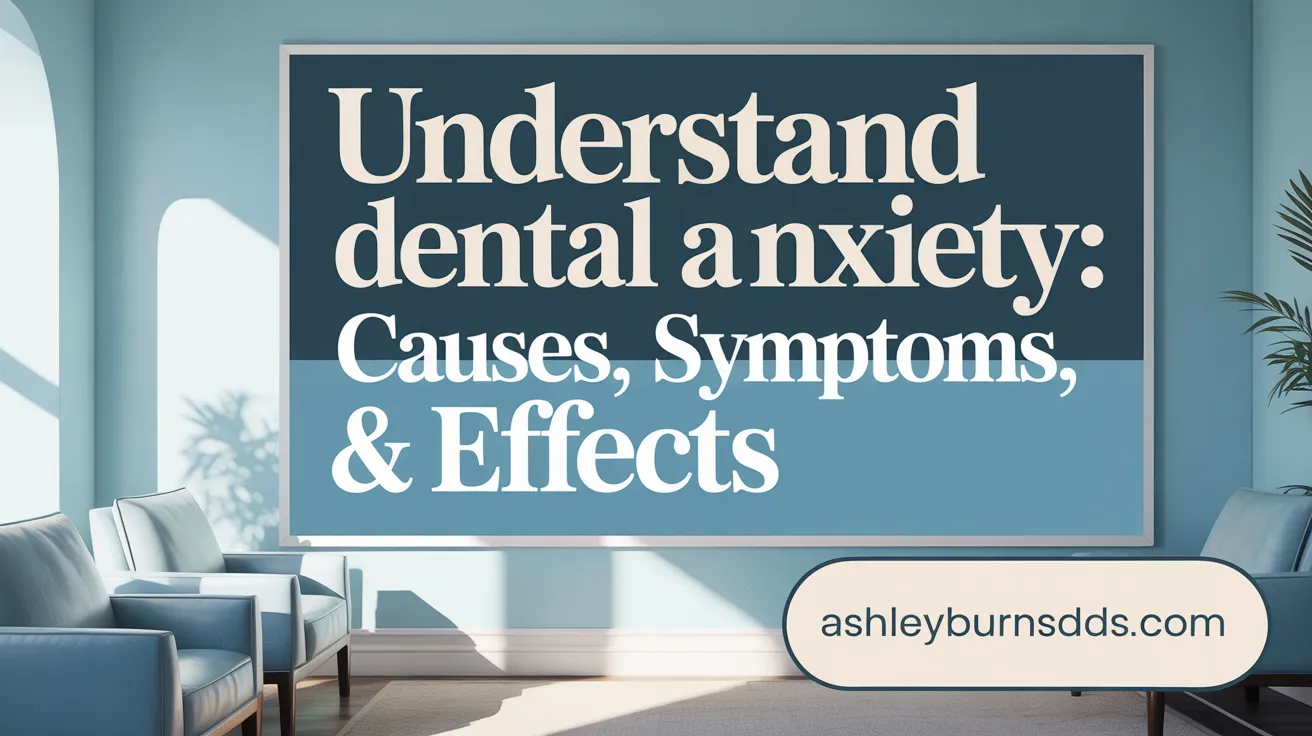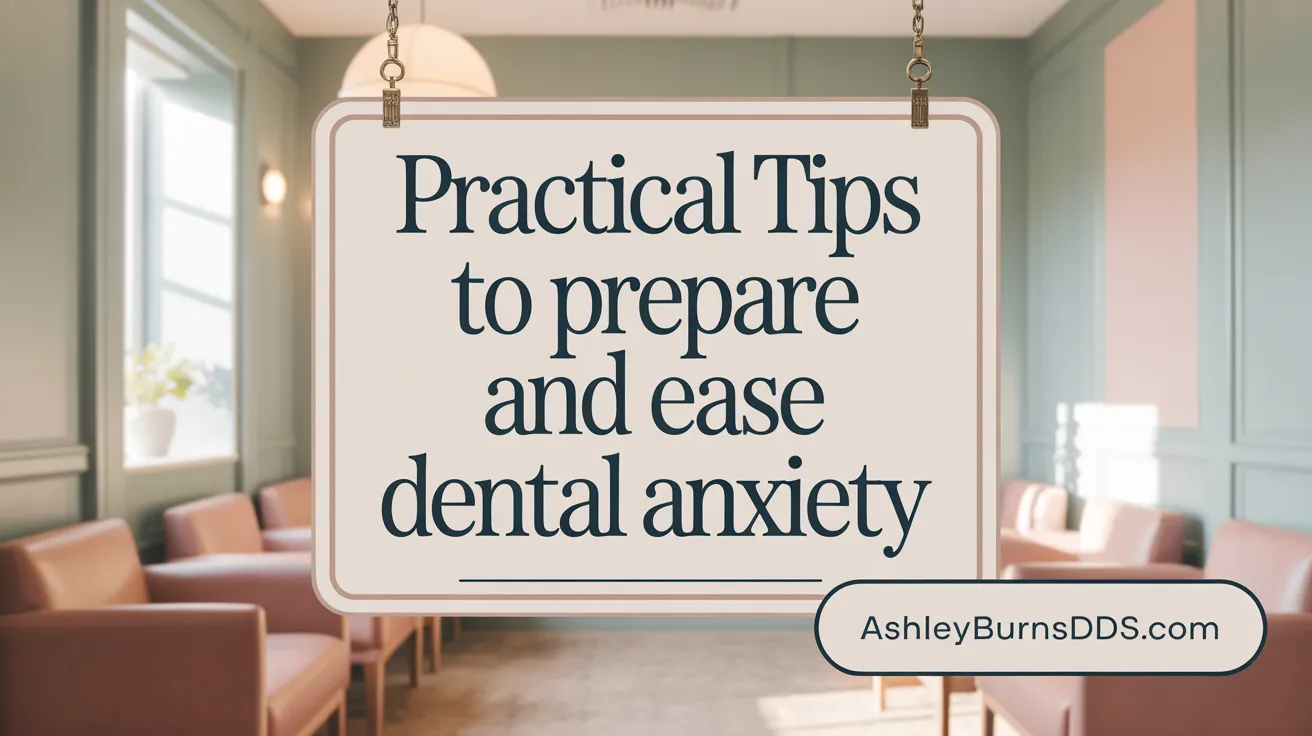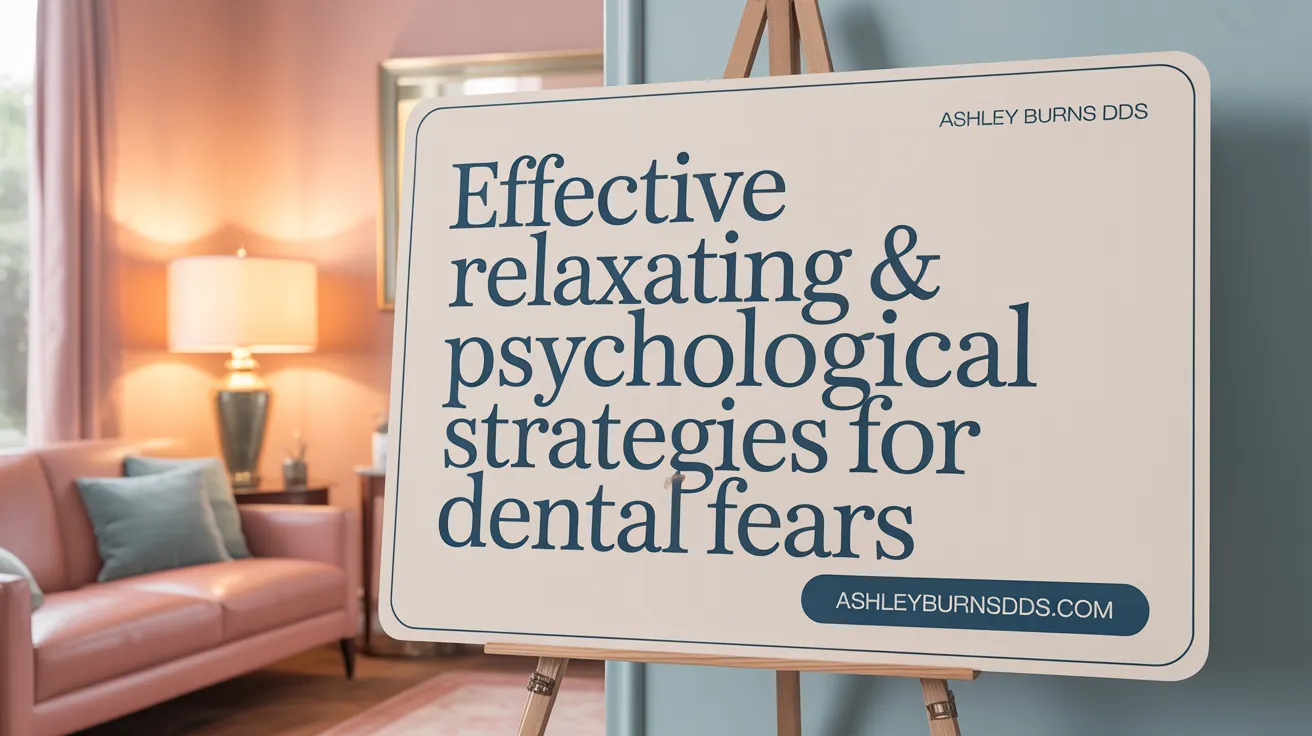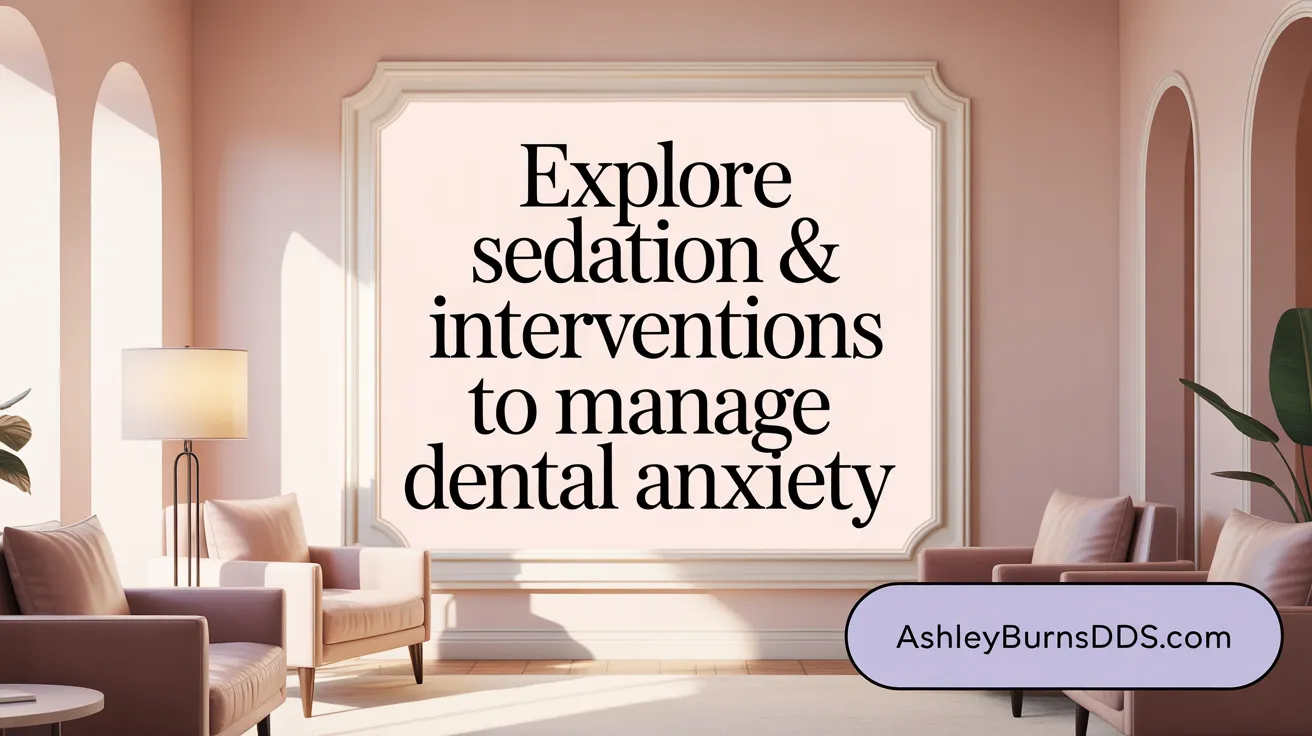Understanding Dental Anxiety: Why It Matters
Dental anxiety affects a significant portion of the population and can severely impact oral health if left unaddressed. Recognizing the causes, symptoms, and consequences of dental anxiety is the first step toward creating a more positive dental experience. This article offers practical tips and evidence-based strategies to help patients manage their fears before their dental appointments, ultimately improving both comfort and oral health outcomes.
Recognizing Causes, Symptoms, and Effects of Dental Anxiety
 Dental anxiety and phobia are widespread issues that can significantly impact oral health. The root causes of dental anxiety often stem from traumatic past experiences, such as painful dental procedures or negative encounters with healthcare providers. Additionally, fears related to injections, the sound of drills, and a perceived loss of control during treatments contribute to heightened anxiety.
Dental anxiety and phobia are widespread issues that can significantly impact oral health. The root causes of dental anxiety often stem from traumatic past experiences, such as painful dental procedures or negative encounters with healthcare providers. Additionally, fears related to injections, the sound of drills, and a perceived loss of control during treatments contribute to heightened anxiety.
Individuals experiencing dental fear may exhibit various symptoms, including an increased heart rate, sweating, trembling, nausea, and even fainting. Some mask these feelings with humor or aggression, making it challenging for dental professionals to identify the severity of their anxiety.
If dental anxiety remains unmanaged, it can lead to avoidance of dental visits altogether. This avoidance can cause oral health issues such as cavities, gum disease, and tooth loss to worsen over time. The fear may become a vicious cycle; the more someone avoids the dentist, the more severe and difficult future treatments may become.
In severe cases, known as dentophobia, the impact extends beyond oral health. It can contribute to overall health problems and emotional distress. Fortunately, approaches like behavior therapy, sedation, and creating a supportive environment help manage fears.
Understanding the causes and symptoms of dental anxiety is crucial for both patients and dental professionals. Open communication, relaxation techniques, and personalized care strategies play vital roles in encouraging regular dental visits and maintaining good oral health.
Why Understanding Dental Anxiety Improves Your Dental Experience
 Dental anxiety is a common concern that significantly influences an individual's oral health and overall quality of life. Many patients experience fear or stress about dental visits, which can lead to avoiding necessary treatment. This avoidance often results in worsening dental conditions such as cavities, gum disease, and even tooth loss, making future treatments more invasive and costly (Dental anxiety and management, Consequences of avoiding the dentist, Avoiding dental care risks).
Dental anxiety is a common concern that significantly influences an individual's oral health and overall quality of life. Many patients experience fear or stress about dental visits, which can lead to avoiding necessary treatment. This avoidance often results in worsening dental conditions such as cavities, gum disease, and even tooth loss, making future treatments more invasive and costly (Dental anxiety and management, Consequences of avoiding the dentist, Avoiding dental care risks).
By understanding the roots of dental anxiety—such as previous traumatic experiences, fear of pain, loss of control, or unhelpful stereotypes—dental professionals can tailor their approach to meet each patient’s needs. Techniques like sedation dentistry, psychological therapies, and effective communication help create a supportive environment, encouraging patients to attend regular check-ups without fear (Causes of dental anxiety, Sedation options for anxious patients, Psychological coping strategies for dental anxiety, Effective communication with your dentist).
Addressing dental fear early is vital because it promotes consistent dental visits focused on prevention rather than treatment of advanced problems. This proactive approach leads to better oral health outcomes, less complex procedures, and improved patient satisfaction (Regular dental check-ups, Preventing dental disease, Preventing complex dental procedures).
When dentists recognize and manage anxiety effectively, they foster trust and comfort. This trust encourages open dialogue, allowing patients to express concerns and participate actively in their care plan. Ultimately, understanding dental anxiety results in a more positive dental experience, helping patients maintain healthier smiles and a higher quality of life (Building trust with dentist, Open communication with dentists, Sharing fears with your dentist).
For more on the importance of understanding dental anxiety and its benefits for dental care, search for importance understanding dental anxiety benefits dental care.
Preparing for Your Dental Appointment: Practical Tips to Reduce Anxiety

How can patients prepare for dental appointments to reduce anxiety?
Preparing ahead of time can make a significant difference in how comfortable you feel during your dental visit. The first step is open communication with your dentist. Share your fears and concerns, whether they involve pain, needles, or loss of control. This allows the dental team to tailor the experience and offer reassurance.
Choosing less busy times for appointments can help you relax, as the office environment may be calmer and less rushed. Avoiding caffeine and high-sugar foods before your visit can reduce jitters and nervousness, promoting a more relaxed state.
Relaxation techniques such as deep breathing exercises are highly effective. The 'three-four-five technique'—inhale for three seconds, hold for four, exhale for five—can activate your body's relaxation response during procedures.
Distraction strategies also help divert your attention. Listening to music, podcasts, or audiobooks on headphones during the treatment can mask noises and create a calming atmosphere.
If your anxiety is severe, discuss sedation options with your dentist, like nitrous oxide or oral sedatives. Additionally, practices like guided imagery, mindfulness, or even cognitive-behavioral therapy can further ease fears.
By combining these approaches—communication, scheduling, dietary choices, relaxation, and environmental familiarity—you can significantly reduce dental anxiety and make your visits more manageable and even routine.
Relaxation and Psychological Techniques for Coping with Dental Fear

What relaxation methods and psychological techniques are effective in coping with dental fear?
Managing dental fear effectively involves a mix of relaxation strategies, environmental adjustments, and professional support. Relaxation techniques such as deep breathing exercises, progressive muscle relaxation, guided imagery, mindfulness meditation, and biofeedback play a crucial role in calming nerves. Deep breathing, like the 'three-four-five' method, can activate the body's relaxation response, helping to reduce anxiety levels.
Psychological interventions are also essential. Cognitive Behavioral Therapy (CBT) can help change negative thoughts associated with dental visits, while systematic desensitization gradually exposes patients to dental stimuli in a controlled manner. Techniques like modeling — watching others undergo dental procedures calmly — and positive reinforcement encourage a more relaxed outlook.
Creating a soothing dental environment further alleviates stress. This can include playing calming music, using pleasant scents, and ensuring open, trust-based communication with the dentist. Patients are encouraged to discuss their fears openly, use signals to pause treatments if overwhelmed, and bring support persons for reassurance.
In cases of severe anxiety, pharmacological options such as nitrous oxide, oral sedatives, or even general anesthesia may be suitable. These methods help ensure patient comfort and cooperation, making dental care a less frightening experience overall.
Available Treatment Options: Sedation and Other Interventions
 Management of dental anxiety involves a spectrum of approaches, ranging from behavioral techniques to pharmacological interventions. For patients with severe fear or phobia, sedation dentistry offers valuable options to facilitate comfort and cooperation during procedures.
Management of dental anxiety involves a spectrum of approaches, ranging from behavioral techniques to pharmacological interventions. For patients with severe fear or phobia, sedation dentistry offers valuable options to facilitate comfort and cooperation during procedures.
Sedation methods include nitrous oxide, often called 'laughing gas,' which provides rapid-onset relaxation that wears off quickly. In addition, oral conscious sedation using medications like benzodiazepines (e.g., diazepam or temazepam) can be taken beforehand to ease nerves. For more intense anxiety or complex dental work, intravenous (IV) sedation, also known as twilight sedation, allows the patient to stay relaxed while remaining awake, with the added benefit that memory of the procedure may be minimized.
In some cases, especially involving extensive procedures or dental phobias, general anesthesia is used in hospital or specialized clinics, rendering the patient fully asleep. All these techniques require careful medical assessment and are performed under the supervision of trained professionals to ensure safety.
Behavioral and psychological therapies also play a crucial role. Techniques such as relaxation exercises, guided imagery, biofeedback, hypnosis, and cognitive-behavioral therapy (CBT) can help address underlying anxieties, improve coping skills, and foster a more positive attitude toward dental care.
Effective combination of sedation and behavioral strategies provides a comprehensive solution for managing dental anxiety, enabling patients to maintain regular dental visits and better oral health.
Building Confidence and Managing Anxiety in Special Populations
Many patients, especially children and those with special needs, benefit from tailored strategies to overcome dental anxiety and build confidence. Effective reassurance begins with establishing a trusting relationship; a caring, knowledgeable dental team that communicates openly helps reduce fears. Dentists can explain procedures in simple terms, use visual aids, or demonstrate equipment to demystify the process.
For children and individuals with special needs, gradual exposure and positive reinforcement are particularly valuable. Techniques like the tell-show-do method involve explaining and demonstrating treatment steps to prepare the patient mentally. Using praise and rewards for cooperation further encourages positive associations with dental visits.
Creating a calming environment is also crucial. Sensory-adapted settings—such as soft lighting, soothing scents, and noise-canceling headphones—help manage sensory sensitivities. Distraction tools like music or video screens can divert attention and reduce distress.
Parental involvement is vital for young children. Pre-visit discussions and explaining what to expect can ease fears. For patients with severe anxiety or behavioral challenges, sedation or general anesthesia may be necessary, but these options should be considered carefully and used as a last resort.
Psychological support, including cognitive-behavioral therapy (CBT), can help address underlying fears or past trauma. Regular, positive dental experiences combined with gentle, patient-centered care foster confidence and reduce avoidance.
Environmental modifications and tailored care plans—like short, frequent visits and clear communication—are effective methods for managing dental fears in diverse populations. This comprehensive approach helps ensure that even the most anxious or special needs patients receive the dental care they need in a safe, supportive manner.
Moving Beyond Fear: Embracing Comfortable Dental Care
Overcoming dental anxiety is achievable through a combination of self-awareness, preparation, communication, and the use of evidence-based psychological and medical interventions. By understanding the nature and causes of dental fears, patients and dental professionals can work together to create supportive environments that foster trust and control. Utilizing relaxation techniques, sedation options, and tailored care approaches—especially for children and special populations—enables more people to access necessary dental care comfortably and confidently. Prioritizing regular dental visits and open dialogue ultimately leads to healthier smiles and improved overall well-being, leaving fear behind and embracing better oral health for life.
